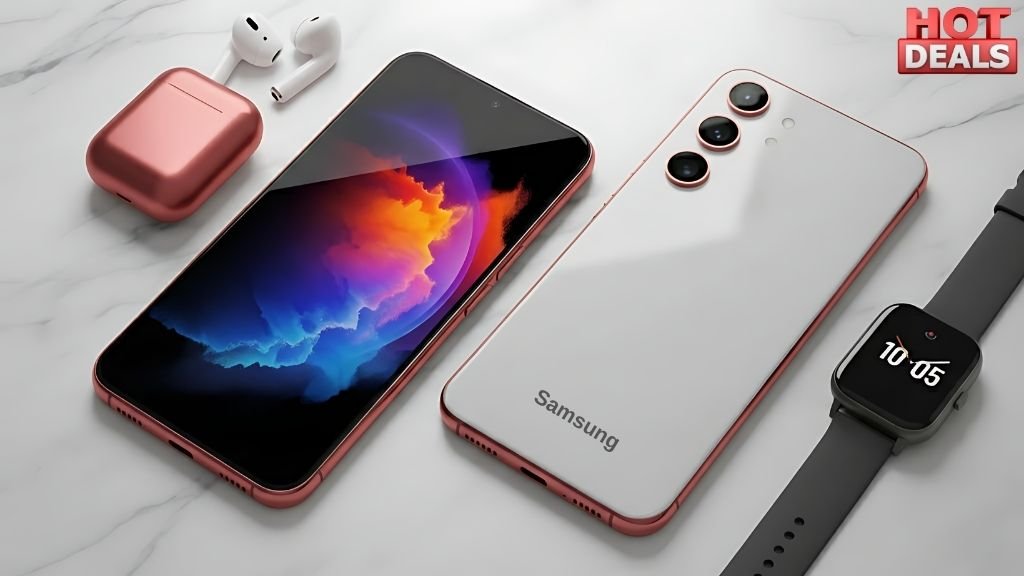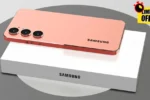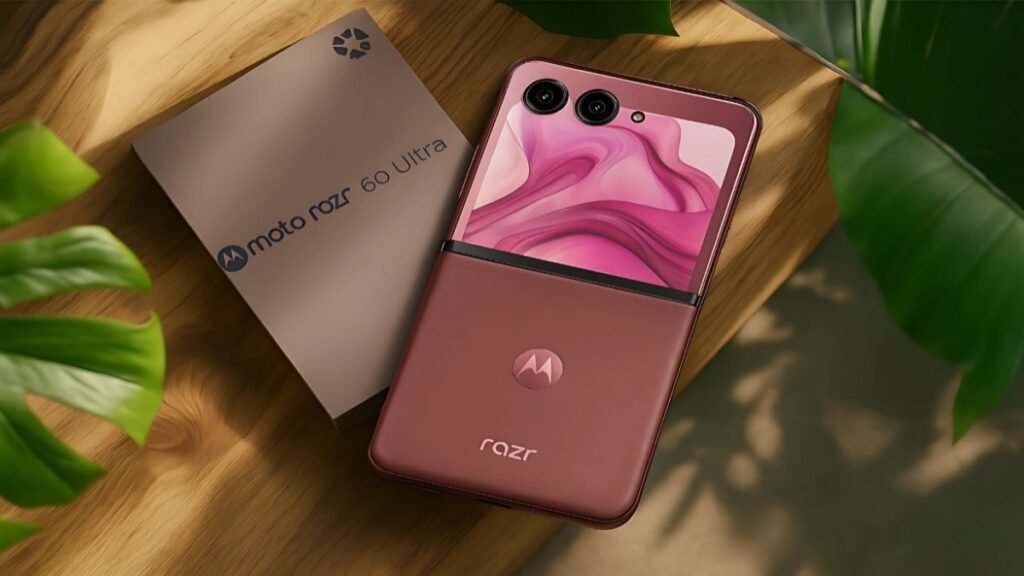Samsung Galaxy Ultra Neo 5G Launched: As of September 13, 2025 (IST), there is no official Samsung product page or newsroom post confirming a phone named “Samsung Galaxy Ultra Neo 5G.” Samsung’s current flagship line publicly centers on the Galaxy S25 Ultra and foldables; posts about an “Ultra Neo 5G” appear on third-party blogs without corroboration from Samsung. Treat “launched” headlines as unverified until Samsung lists the device on its own site with price and availability.
Why the ‘Ultra Neo 5G’ Name Caught Fire
“Ultra” sounds premium; “Neo” sounds fresh. Put them together and you’ve got a label that feels inevitable—like the sequel your brain already green-lit. We’ve seen this movie before: a handful of rumor posts, recycled renders, and speculative spec sheets spiral into “launch” claims without a single official buy button. As readers, we don’t have to dunk on leaks to stay smart. The way to play it is simple: separate naming hype from shipping reality. If a product is real, you’ll see consistent SKUs, country pages, carrier listings, and preorder windows across regions. If what you’re seeing is a collage of wish lists, AI renders, and vague “sources,” you’re probably looking at a rumor storm. That doesn’t mean the idea is bad—it means you should protect your wallet and your expectations until the facts show up where they always do: on Samsung’s site and verified retail partners. The upside of patience? You’ll make a better decision when real units and real reviews land, rather than chasing a headline that evaporates the moment you tap it.
What a Real ‘Ultra Neo 5G’ Would Need to Earn Its Name
Let’s imagine Samsung did roll out an “Ultra Neo 5G.” What would justify the label beyond typography? First, camera consistency that wins in mixed light—think larger primary sensor, smarter multi-frame processing, and portrait color that honors every skin tone. Second, sustained performance that stays cool during 4K/60 recording, live translation, or 3D gaming—not just a one-lap benchmark sprint. Third, a comfort-first display: high peak brightness for India’s sun, tight LTPO control for battery savings, and flicker-reduction choices that don’t fatigue eyes at night. Fourth, a battery and charging strategy that balances speed with longevity (temperature-aware fast charging, learn-your-routine top-ups, and transparent cycle health metrics). Finally, long software support with regular feature drops so the phone gets better in year two and three, not just day one. If Samsung shipped that package at the right price—and threw in ecosystem perks like Galaxy AI features, DeX refinements, and S Pen-level productivity—it would be “Ultra” in more than name.
Design & Materials: The Stuff You Feel Every Day
Specs are the poster; design is the movie. We’d expect clean geometry with softened edges for grip, a durable frame (titanium or a high-strength alloy), and robust glass. Weight matters more than most think: if a phone crosses ~230g without balance, long reading sessions and one-hand typing get tiring. Finishes should be practical—matte that resists smudges, micro-texture that helps grip, and camera rings that don’t snag lint. Buttons? Firm, quiet, and high enough to avoid accidental presses when gaming in landscape. Haptics should be precise (think “camera-shutter click,” not “electric toothbrush”). Bonus points for sustainability: recycled metals, repair-friendly parts, and easy battery swaps down the road. We’d also watch for ingress protection that respects monsoon realities and lip-friendly speaker tuning so podcasts sound full without rattling the chassis. “Premium” isn’t glass for glass’s sake; it’s the sum of tiny decisions you notice at 11 p.m. when you still don’t want to put the phone down.
Display Deep-Dive: Brightness, Smoothness, and Eye Comfort
A proper “Ultra Neo 5G” display should be more than a spec brag. Peak brightness above 2,000 nits helps outdoors, but sustained brightness and tone mapping are what keep streaming scenes readable without overblowing highlights. LTPO 1–120Hz (or finer) is great on paper; in practice, we want smart ramping that saves battery when reading static text and springs to life during scrolling. Color profiles should include a calibrated “natural” mode—no radioactive greens—and a vivid option for those who love pop. Eye comfort isn’t just blue light filters; it’s also PWM behavior and DC-like dimming choices for late-night reading. Add durable glass with low reflectivity, and you’ve got a screen that’s less mirror, more window. Don’t forget the practicals: accurate touch at edges (important for S Pen-style notes), smooth palm rejection, and a responsive in-display fingerprint reader that doesn’t stumble when your hands are a bit sweaty after a metro ride.
Performance & AI: Speed You Can Feel, Not Just Measure
We all love a big number, but the win is perceived speed. That’s where on-device AI and thermal design earn their keep. A modern flagship SoC with generous RAM means little if the phone heat-soaks at minute four of 4K recording or when you open ten Chrome tabs and a maps session in split-screen. The phone we’d want combines a 3nm-class chip, a generous vapor chamber, and smart task scheduling: heavy jobs on performance cores for a beat, then an efficient handoff to save battery and reduce heat. AI features shouldn’t be parlor tricks. Think real-time translation that stays on-device for privacy, voice isolation for noisy calls, and image tools that help non-creators finish a shareable photo in under 30 seconds. The goal is a phone that feels quietly fast—rarely asking you to wait, and almost never forcing you to manage it.
Cameras That Earn Trust, Not Just Clicks
A great camera system doesn’t shout; it delivers. The hypothetical “Ultra Neo 5G” should nail three everyday shots: portraits at dusk, indoor group photos with mixed lighting, and video of a moving subject (kids, pets, traffic) without jitter. That means a stabilized main sensor with fast multi-frame HDR, an ultrawide with autofocus for close-ups, and a telephoto that’s useful between 2x and 10x without watercolor smearing. Beyond hardware, color science must be intentional—true skin tones, gentle highlight roll-off, and shadows with detail. Creators need reliable 4K/60 across lenses, a clean audio path (wind reduction, level meters), and tap-to-rack focus that sticks. For most of us, the built-in editor should turn “ehh” into “wow” in three taps: straighten, denoise, and tone. If a phone can deliver that with minimal fuss, you’ll stop second-guessing and start capturing.
Battery Life, Charging, and Heat: The Real-World Triangle
Battery capacity is the headline; thermal behavior is the plot twist. A balanced flagship combines a big cell with smart background policies so chat sync, cloud photos, and location services don’t nibble all day. Charging should be fast enough to get you from low to “I’m fine” in a coffee break, but not so aggressive that the pack ages early. We’d love temperature-aware charging that slows down at 80–90% when you’re plugged in at night, and a “commute boost” mode that prioritizes speed when you’re dashing out. Heat is the silent thief of both performance and battery health, so heat dissipation—vapor chamber size, graphite stacks, and smart boost timing—matters as much as the wattage on the box. Practical tip: sustained 5G, camera bursts, and navigation are the hardest combos; a good design stays steady there.
5G, Wi-Fi, and Calls: The Connectivity Checklist
A “Neo 5G” badge is only as good as the radio fundamentals. Look for strong 5G band coverage for your region (including SA where your carrier supports it), robust carrier aggregation on 4G as fallback, and VoNR for clean voice on 5G when available. On Wi-Fi, Wi-Fi 7 brings lower latency for game streaming and big file transfers on local networks; if you frequently move footage to a laptop, you’ll feel the difference. Antenna design is under-appreciated—consistent bars in the back of a ride-hail car, smoother handoffs between cells, and fewer call drops. Add dual eSIM + physical SIM flexibility for travelers and smart network switching that prefers the stable link over the shiny one. Result: fewer “Can you hear me now?” moments and more “Yep, already sent.”
Software Longevity & Updates: The Ownership Equation
The best phone is the one that stays great. Long OS and security support is now a high-end expectation; anything in the 5–7 year range is table stakes for a device wearing “Ultra.” Just as important is quality of updates: regular feature drops that add meaningful capabilities rather than changing icons. Privacy dashboards should be understandable for non-techies, permissions should be easy to audit, and emergency/safety tools should be one swipe away. For enterprise users, look for kernel hardening, secure element design, and easy, encrypted work profile setup. Software polish is invisible until it isn’t—then you can’t live without it.
Samsung Ecosystem Perks We’d Expect
A real Samsung flagship doesn’t live alone. We’d expect seamless Galaxy AI features across phone, tablet, and PC; DeX for plug-and-work desk setups; and tight pairing with Galaxy Watch for health metrics and camera remote. Buds pairing should be instant, with intelligent audio handoff between phone and laptop. SmartThings routines ought to tie it all together: geofenced lights, AC, and door locks that obey your schedule. It’s these “boring superpowers” that you start to miss when using a phone outside the ecosystem—because everything takes two taps longer.
What You Can Actually Buy Today (Real, Not Rumor)
If you’re itching for an “Ultra-class” experience right now, shop Samsung’s official lineup rather than rumor magnets. The Galaxy S25 Ultra sits at the top with a large, bright display, long support window, and Galaxy AI features; the broader Galaxy catalog includes foldables, Fan Edition, and A-series 5G models for different budgets. Use regional Samsung pages and authorized retailers to verify live pricing, exchange offers, and color/storage availability. If your favorite tech influencer says a unicorn device “just launched,” sanity-check it against Samsung’s announcements first—the official pages are the source of truth.
Pricing Psychology: Reading Deals Without Getting Played
Launch week prices are rarely the final word. Expect bank offers, exchange bonuses, and seasonal sales to move numbers meaningfully. The trick is calculating effective price: sticker minus instant discount minus bank offer minus exchange value you would actually get (not the best-case banner). Beware of freebies you won’t use—if a bundle’s value is locked in an app you’ll uninstall, it’s not value. Keep a hard budget ceiling and a shortlist of must-have features (camera reliability, battery life, display comfort). If a real Samsung flagship dips into your range during a festival sale, that’s often a smarter buy than waiting for a rumored model that may never materialize.





